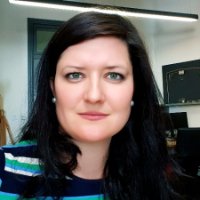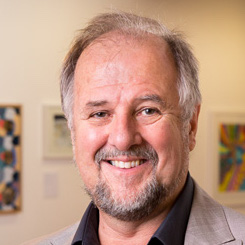A collaborative research initiative between Catholic Education Melbourne (CEM) and LEaRN at the University of Melbourne for three years from 2015 to 2017.
About
Sponsored by Catholic Education Melbourne (CEM), the Towards Effective Learning Environments in Catholic Schools: An Evidence based Approach (TELE) project was set up in 2015 as a collaborative research initiative between CEM and the Learning Environments Applied Research Network (LEaRN) at the University of Melbourne. The project has three years of funding from 2015 to the end of 2017.
The purpose of the project is to develop an evidence base to inform both the design and pedagogical use of learning environments (school facilities) in the Archdiocese of Melbourne and elsewhere in the Catholic Education System. To achieve this, the pedagogical effectiveness of 44 learning environments in Catholic primary and secondary schools will be evaluated using the LEaRN Evaluation tool. LEaRN Evaluation tool is a post occupancy evaluation tool designed to investigate the effectiveness of different learning environments in supporting desired teaching and learning activities. The LEaRN Evaluation tool is a post occupancy evaluation tool designed to investigate the effectiveness of different learning environments in supporting desired teaching and learning activities.
Detailed Project Outline
-
Objectives
The objectives of the TELE project are:
- To build an evidence-base to inform decisions about how best to design and use learning environments in primary and secondary Catholic schools.
- To evaluate the alignment between contemporary pedagogies (teaching and learning activities) and the designs of learning environments across a range of different building typologies.
- To gather data that can inform approaches to improving the alignment between contemporary pedagogies and the design of school facilities.
- To determine if there is any correlation between the relative alignment of pedagogies and learning environments and the learning outcomes achieved by students (non-causal).
-
Outcomes
The TELE Project is made up of three complementary studies:
- Study 1 – Development of online interface and database for LEaRN Evaluation Module 3;
- Study 2 – Annual data collection and meta-synthesis using LEaRN Evaluation Module 3 (each year for three years, 2015-2017);
- Study 3 – Annual correlation of LEaRN Evaluation Module 3 data with ‘learning outcomes’ data held by CEM (each year for three years, 2015-2017).
Study 1 was completed in 2015. This involved the creation of an online interface for disseminating project materials and surveys, and the development of a database to ensure that the data collected could be efficiently collated and analysed.
Study 2 involves conducting an annual meta-synthesis (Walsh & Downe, 2005) of the findings arising from the 12-14 learning environment evaluations conducted each year. The purpose of this process is to develop ‘big picture’ lessons learned about the design and use variables that contribute to effective learning environments.
Study 3 explores possible correlations between the findings arising on an annual basis from Study 2 and school performance and student learning outcomes data held by CEM.
-
Impact
The lessons learned through the TELE Project are expected to inform CEM school facility design guidelines and policies, as well as provide information for Catholic school communities about how to use learning spaces to best pedagogical effect.
Publications and Project Outputs
-
Peer-reviewed Conference Papers
Cleveland, B., Soccio, P., Love, P. (2016). Learning environment evaluation and the design of school facility guidelines. In M. Baguley (Ed.), Transforming Educational Research: Proceedings of the Conference for the Australian Association for Research in Education, ISSN 1324-9320.
Soccio, P., Cleveland, B. (2015). Evaluating the pedagogical effectiveness of learning spaces. In R.H. Crawford and A. Stephan (Eds.), Living and Learning: Research for a Better Built Environment, 49th International Conference of the Architectural Science Association, Melbourne, Australia 2-4 December 2015, pp.507-516.
-
Fully Written Conference Papers
Soccio, P., Cleveland. (2016). Summary of Year one outcomes from the TELE Project: Evaluating pedagogical effectiveness in Catholic learning environments. Paper presentation at The 8th Biennial Conference of The European Association for Research on Learning and Instruction: Special Interest Group 1 on Assessment and Evaluation, Munich, Germany, 24-26August 2016
-
Major research reports
Soccio, P., Cleveland, B., Imms, W. (2017). Year 2 outcomes (Studies 2 and 3) for the Towards Effective Learning Environments (TELE) Project. Research Report. Melbourne: The University of Melbourne.
Soccio, P., Cleveland, B., Imms, W. (2016). Year 1 outcomes (Studies 2 and 3) for the Towards Effective Learning Environments (TELE) Project. Research Report. Melbourne: The University of Melbourne.
Soccio, P., Cleveland, B., Imms, W (2015). Study 1: Towards Effective Learning Environments: An evidence based approach. Research Report. Melbourne: The University of Melbourne.
Cleveland, B., & Soccio, P. (2013). Research report. Development and pilot testing of the School Spaces Evaluation Instrument (SSEI): Module 2 – Technical Performance Evaluation/Indoor Environment Quality (IEQ) & Module 3 – Alignment of Pedagogy and Learning Environments (CEOM). Melbourne: The University of Melbourne
People
-
 Dr Benjamin Cleveland, Senior Lecturer
Dr Benjamin Cleveland, Senior Lecturer -
 Dr Philippa Soccio, Research Fellow
Dr Philippa Soccio, Research Fellow -
 A/Prof Wes Imms, Associate Professor
A/Prof Wes Imms, Associate Professor
Banner: St Mary of the Cross Primary School, Baldasso Cortesse. Photo by Peter Clarke Photography.